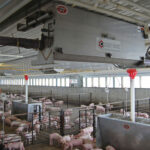Smoke Signals
For a few weeks in winter or early spring, a talisman of sorts rises between the trees throughout rural Vermont. It is many places at once, yet the source, hidden amongst the hills, mountains and hollers, is not so disparate....
Smoke Signals
For a few weeks in winter or early spring, a talisman of sorts rises between the trees throughout rural Vermont. It is many places at once, yet the source, hidden amongst the hills, mountains and hollers, is not so disparate....For a few weeks in winter or early spring, a talisman of sorts rises between the trees throughout rural Vermont. It is many places at once, yet the source, hidden amongst the hills, mountains and hollers, is not so disparate. On days when the wind is relatively still, these specter-like columns, comprised of smoke and vapor, can be seen for miles, beaconing those in the know.
They drive and trek, and as these seekers near their destinations, a faint yet familiar scent of something sweet intensifies the allure and further reinforces behavior learned from parents and grandparents, many of whom visited these same sites.
As is the tradition, these visitors are welcome. In from the cold and great outdoors, they enter the confines of cozy huts, known as sugarhouses, where the senses are greeted by steam and fragrance percolating off maple sap at the boiling point, and by the warmth of friends.
“It’s kind of like a big visiting contest,” says Hope Colburn, who along with her husband, Mark, runs Colburn’s Village View Maples, a sugaring operation near Glover, Vt. “During sugaring, people here drive around town to look for the steam and smoke from the sugaring, and they go from sugarhouse to sugarhouse … to be a part of this tradition, to witness it and visit. Of course, it dates back to … ” she pauses and laughs, “till who knows, but it’s definitely part of the heritage.”
From Vermont to Eastern Canada and across the prairie’s northern tier, sugaring—which typically lasts three to four weeks, beginning as early as January and ending as late as April—has signaled the end of winter. When daytime high temperatures reach the 40s (Fahrenheit) and nights dip back down into the 20s, a pressure is created in several varieties of maple trees, forcing the trees’ sugary sap to rise and flow out of breaks in the bark, whether natural or man-made.
Natives of these regions learned to collect the sap and boil it down long before Europeans arrived. They had their own rituals surrounding its collection and transformation into syrup, yet the addition of a warm sugarhouse has certainly added to that allure for the modern-era visitor. So have doughnuts.
“We go through a lot of them during sugaring season,” says Hope. Her mom makes the sinkers by the dozens, using maple syrup from the Colburns’ sugarhouse to feed those who visit at this critical time, when a year’s worth of nature’s and man’s work gets boiled down, literally, into sticky gold. Good friends help pass the time.
A sure-footed tractor helps the Colburns check tubing during sugaring.




